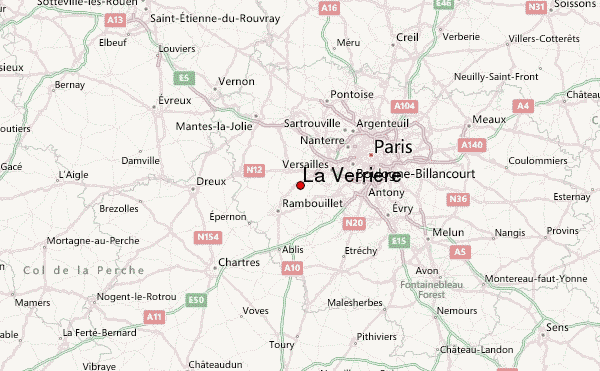by Sonia Greene
About two in the
morning I knew it was coming. The great black silences of night's
depth told me, and a monstrous cricket, chirping with a persistence
too hideous to be unmeaning, made it certain. It is to be at four
o'clock—at four in the dusk before dawn, just as he said it would
be. I had not fully believed it previously, because the prophecies of
vindictive madmen are seldom to be taken with seriousness. Besides, I
was not justly to be blamed for what had befallen him at four o'clock
on that other morning; that terrible morning whose memory will never
leave me. And when, at length, he had died and was buried in the
ancient cemetery just across the road from my east windows, I was
certain that his curse could not harm me. Had I not seen his lifeless
clay securely pinned down by huge shovelfuls of mold? Might I not
feel assured that his crumbling bones would be powerless to bring me
the doom at a day and an hour so precisely stated? Such, indeed, had
been my thoughts until this shocking night itself; this night of
incredible chaos, of shattered certainties, and of nameless portents.
I had retired
early, hoping fatuously to snatch a few hours of sleep despite the
prophecy which haunted me. Now that the time was so close at hand, I
found it harder and harder to dismiss the vague fears which had
always lain beneath my conscious thoughts. As the cooling sheets
soothed my fevered body, I could find nothing to soothe my still more
fevered mind; but lay tossing and uneasily awake, trying first one
position and then another in a desperate effort to banish with
slumber that one damnably insistent notion—that it is to occur
at four o'clock.
Was this frightful
unrest due to my surroundings; to the fateful locality in which I was
sojourning after so many years? Why, I now asked myself bitterly, had
I permitted circumstance to place me on this night of all nights, in
that well-remembered house and that well-remembered room whose east
windows overlook the lonely road and the ancient country cemetery
beyond? In my mind’s eye every detail of that unpretentious
necropolis rose before me—its white fence, its ghost-like granite
shafts, and the hovering auras of those on whom the worms fed.
Finally the force of the conception led my vision to depths more
remote and more forbidden, and I saw under the neglected grass the
silent shapes of the things from which the auras came - the calm
sleepers, the rotting things, the things which had twisted
frantically in their coffins before sleep came, and the peaceful
bones in every stage of disintegration from the complete and coherent
skeleton to the huddled handful of dust. Most of all I envied the
dust. Then new terror came as my fancy encountered his grave. Into
that sepulcher I dared not let my thought stray, and I should have
screamed had not something forestalled the malign power that pulled
my mental sight. That something was a sudden gust of wind, sprung
from nowhere amidst the calm night, which unfastened the shutter of
the nearest window, throwing it back with a shivery slam and
uncovering to my actual waking glance the antique cemetery itself,
brooding spectrally beneath an early morning moon.
I speak of this
gust as something merciful, yet know now that it was only transiently
and mockingly so. For no sooner had my eyes compassed the moonlight
scene than I became aware of a fresh omen, this time too unmistakable
to be classed as an empty phantasm, which arose from among the
gleaming tombs across the road. Having glanced with instinctive
apprehension toward the spot where he lay moldering—a
spot cut off from my gaze by the window-frame—I perceived with
trepidation the approach of an indescribable something which flowed
menacingly from that very direction; a vague, vaporous,
formless mass of grayish- white substance or spirit, dull and tenuous
as yet, but every moment increasing in awesome and cataclysmic
potentiality. Try as I might to dismiss it as a natural
meteorological phenomenon, its fearsomely portentous and deliberate
character grew upon me amidst new thrills of horror and apprehension;
so that I was scarcely unprepared for the definitely purposeful and
malevolent culmination which soon occurred. That culmination,
bringing with it a hideous symbolic foreshadowing of the end, was
equally simple and threatening. The vapor each moment thickened and
piled up, assuming at last a half tangible aspect; while the surface
toward me gradually became circular in outline, and markedly concave;
as it slowly ceased its advance and stood spectrally at the end of
the road. And as it stood there, faintly quivering in the damp night
air under that unwholesome moon, I saw that its aspect was that of
the pallid and gigantic dial of a distorted clock.
Hideous events now
followed in demoniac succession. There took shape in the lower
right-hand part of the vaporous dial a black and formidable creature,
shapeless and only half seen, yet having four prominent claws which
reached out greedily at me—claws redolent of noxious fatality in
their very contour and location; since they formed too plainly the
dreaded outlines, and filled too unmistakably the exact position, of
the numeral IV on the quivering dial of doom. Presently the
monstrosity stepped or wriggled out of the concave surface of the
dial, and began to approach me by some unexplained kind of
locomotion. The four talons, long, thin, and straight, were now seen
to be tipped by disgusting, thread-like tentacles, each with a vile
intelligence of its own, which groped about incessantly, slowly at
first, but gradually increasing in velocity until I was nearly driven
mad by the sheer dizziness of their motion. And as a crowning horror
I began to hear all the subtle and cryptic noises that pierced the
intensified night silence; a thousand-fold magnified, and in one
voice reminding me of the abhorred hour of four. In vain I tried to
pull up the coverlet to shut them out; in vain I tried to drown them
with my screams. I was mute and paralyzed, yet agonizingly aware of
every unnatural sight and sound in that devastating, moon-cursed
stillness. Once I managed to get my head beneath the covers—once
when the cricket's shrieking of that hideous phrase, four-o’clock,
seemed about to shatter my brain—but that only aggravated the
terror, making the roars of that detestable creature strike me like
the blows of a titanic sledgehammer.
And now, as I
withdrew my tortured head from its fruitless protection, I found
augmented diabolism to harass my eyes. Upon the newly painted wall of
my apartment, as if called forth by the tentacled monster from the
tomb, there danced mockingly before me a myriad company of beings,
black, grey, and white, such as only the fancy of the god-stricken
might visualize. Some were of infinitesimal smallness; others covered
vast areas. In minor details each had a grotesque and horrible
individuality, in general outlines they all conformed to the same
nightmare pattern despite their vastly varied size. Again I tried to
shut out the abnormalities of the night, but vainly as before. The
dancing things on the wall waxed and waned in magnitude, approaching
and receding as they trod their morbid and menacing measure. And the
aspect of each was that of some demon clock-face with one sinister
hour always figured thereon - the dreaded, the doom-delivering hour
of four.
Baffled in every
attempt to shake off the circling and relentless delirium, I glanced
once more toward the unshuttered window and beheld again the monster
which had come from the grave. Horrible it had been before;
indescribable it had now become. The creature, formerly of
indeterminate substance, was now formed of red and malignant fire;
and waved repulsively its four tentacled claws - unspeakable tongues
of living flame. It stared and stared at me out of the blackness;
sneeringly, mockingly; now advancing, now retiring. Then, in the
tenebrous silence, those four writhing talons of fire beckoned
invitingly to their demoniacally dancing counterparts on the walls,
and seemed to beat time rhythmically to the shocking saraband till
the world was one ghoulishly gyrating vortex of leaping, prancing,
gliding, leering, taunting, threatening four o’clocks.
Somewhere,
beginning afar off and advancing slowly over the sphinx like sea and
the febrile marshes, I heard the early morning wind come soughing;
faintly at first, then louder and louder until its unceasing burden
flowed as a deluge of whirring, buzzing cacophony bringing always the
hideous threat, ‘four o’clock, four o’clock, FOUR
O’CLOCK.’ Monotonously it grew from a whimper to a deafening
roar, as of a giant cataract, but finally reached a climax and began
to subside. As it receded into the distance it left upon my sensitive
ears such a vibration as is left by the passing of a swift and
ponderous railway train; this, and a stark dread whose intensity gave
it something of the tranquility of resignation.
The end is near.
All sound and vision have become one vast chaotic maelstrom of
lethal, clamorous menace, wherein are fused all the ghastly and
unhallowed four o’clocks which have existed since immemorial time
began, and all which will exist in eternities to come. The flaming
monster is advancing closely now, its charnel tentacles brushing my
face and its talons curving hungrily as they grope toward my throat.
At last I can see its face through the churning and phosphorescent
vapors of the graveyard air, and with devastating pangs I realize
that it is in essence an awful, colossal, gargoyle-like caricature of
his face—the face of him from whose uneasy grave it has
issued. Now I know that my doom is indeed sealed; that the wild
threats of the madman were in truth the demon maledictions of a
potent fiend, and that my innocence will prove no protection against
the malign volition which craves a causeless vengeance. He is
determined to pay me with interest for what he suffered at that
spectral hour; determined to drag me out of the world into realms
which only the mad and the devil-ridden know.
And as amidst the
seething of hell’s flames and the tumult of the damned those fiery
claws point murderously at my throat, I hear upon the mantel the
faint whirring sound of a timepiece; the whirring which tells me that
it is about to strike the hour whose name now flows incessantly from
the death-like and cavernous throat of the rattling, jeering,
croaking grave-monster before me—the accursed, the infernal hour
of four o’clock.



























